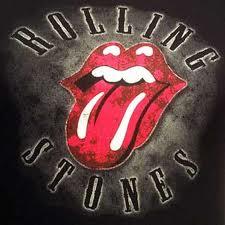 “I hope they don’t mistake us for one of those rock n’ roll bands.” – Mick Jagger
“I hope they don’t mistake us for one of those rock n’ roll bands.” – Mick Jagger
The Rolling Stones could easily be called one of the biggest acts in Rock n’ Roll; pioneers who carved out much of what we define as rock music to date. And, like most music, the Stones were built in the blues. In 1960, before the birth of the stones, Mick Jagger happened to run into Keith Richards at a train station. He noticed Keith had Muddy Waters albums under his arm and the two quickly struck up what would be one of the most celebrated friendships in music history.
The band came together over a mutual love of the blues. Bill Wyman, Brian Jones, et. al. were blues affectionados who desperately wanted to play a Chicago-style of blues in the U.K., which they did for several years. When asked what the band name was, a quick glance at a Muddy Waters album sealed the name into musical history forever: “Rolling Stones”, named after Mud’s song Rollin’ Stone.
Mick, Keith and the band held Muddy, Bo Diddley, Chuck Berry, and many of the artists at Chess Records in the highest regard. Indeed, when the Stones came out with their first album, it was filled to the brim with Willie Dixon, Jimmy Reed, Bo Diddley, Slim Harpo and Chuck Berry covers. The album wasn’t exactly a success, but the Stones came to the U.S. to tour anyways. While in the states, they made a point of visiting Chess Records, meeting Muddy and the rest of their self-described idols. It was their time at Chess that the Stones came out with the famous instrumental 2120 S. Michigan Ave, a tribute to Chess’s address. Several of the other singles recorded at the time began to make big waves on the air.
The Stones released The Rolling Stones, Now! based on much of the material that was recorded at Chess’s studio, and their star continued to rise to meteoric heights. Court cases, jail, the death of keyboardist Brian Jones, and a couple of more albums came to pass, but the Stones didn’t forget their blues roots. The release of Let It Bleed in 1969 was packed with bluesy licks and even a cover of the great bluesman Robert Johnson’s sing Love In Vein. At this point, the Stones were one of the biggest bands on the planet. They toured the U.S. to support Let It Bleed, bringing along blues acts such as Buddy Guy, Junior Wells, B.B. King, and Ike Turner to play with them.

The Rolling Stones only continued to rise to new and unexplored heights in rock, releasing albums like Exile on Main Street, and “living the rock star life”, with drugs, legal complications and money issues. Through all of their well-publicized issues, however, the Stones continued to prove they had blues. In November, 1981, the Stones put on a show at the Checkerboard Lounge in Chicago, enlisting the help of Buddy Guy and Muddy Waters himself to play alongside them. Sadly, it would be one of Mud’s last performances; he passed away less than two years after. Bill Wyman went on to other projects in the 90s, eventually writing Bill Wyman’s Blues Odyssey, a well made book about the blues in America, from it’s birth to current times. In 2008 the Stones once again showed the world that they could still play the blues. Shine A Light was a Scorsese-directed DVD of a live performance at the Beacon Theater. Back with blues giant Buddy Guy, they rocked the house with a scorching version of Muddy’s Champaign and Reefer.
You can find the American Blues Scene at:
Facebook
Twitter
Last FM
Myspace
YouTube
ReverbNation
Live Blues World

